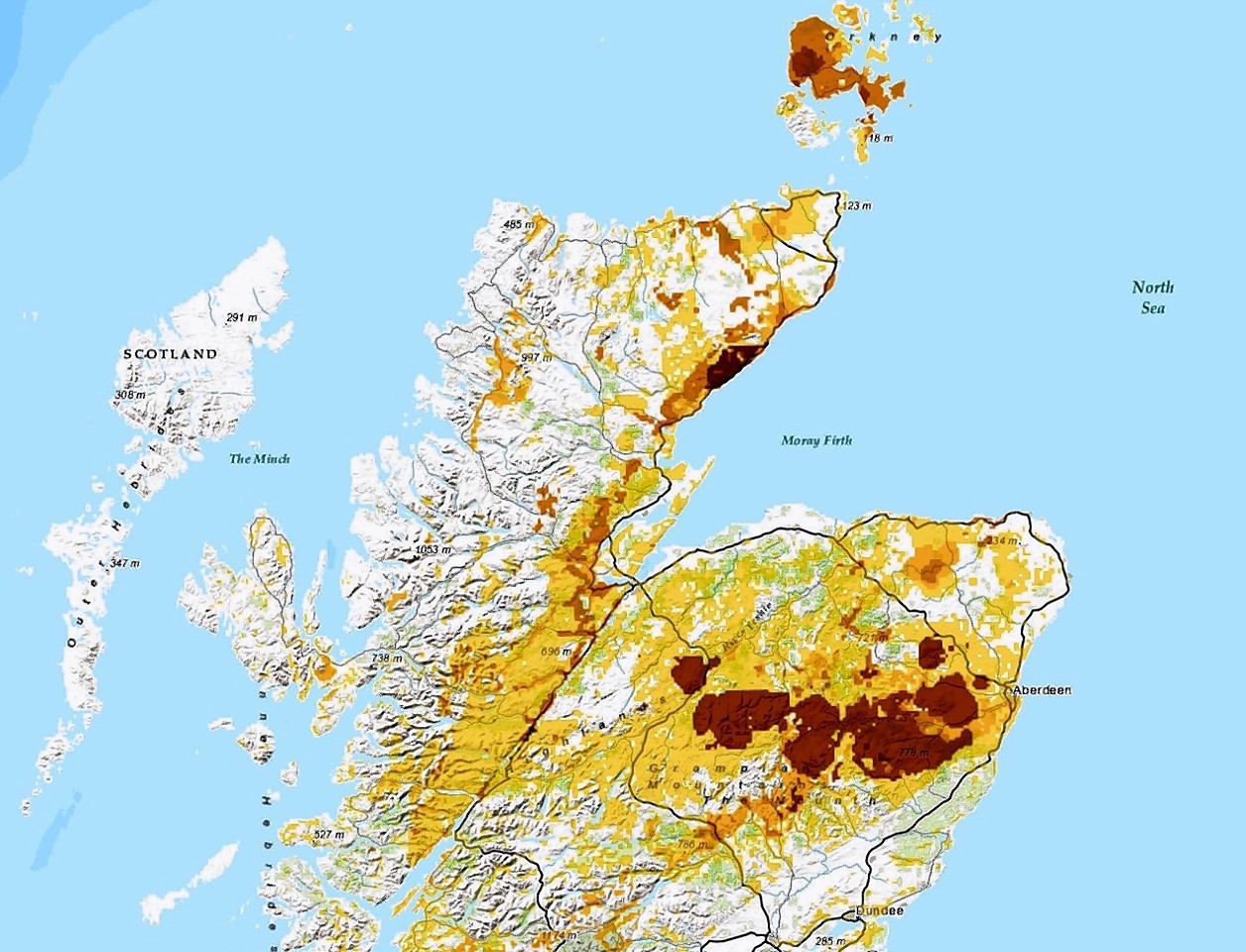Unsafe levels of cancer-causing radon gas have been found in one in seven council homes in the Highlands.
The local authority pledged to take action after testing revealed evidence of radon in 95 of almost 700 houses.
Experts urged local residents not to “panic” last night, insisting that there was “no need for any immediate concern”.
But private homeowners were advised to carry out their own tests for the potentially harmful gas.
The region is among 16 areas of Scotland with a presence of radon which exceeds recommended levels.
The council commissioned Public Health England (PHE) – the nationally acknowledged expert authority – to test 1,150 houses in areas deemed to be “at the highest risk” from radon.
Almost 700 test kits have been returned, and 95 of them showed readings above the local authority’s safe target level of 100 becquerels per cubic metre.
The council houses tested were in the wards of Badenoch and Strathspey, Wester Ross, Strathpeffer and Lochalsh, Caol and Mallaig, Landward Caithness, East Sutherland and Edderton; Dingwall and Seaforth and Aird and Loch Ness.
Council officials moved to reassure the public last night, with a spokeswoman saying: “There is no need for any immediate concern.
“There is no acute risk from radon. Any risk is due to long-term exposure.”
Radon is a naturally occurring radioactive gas which cannot be seen, heard or even tasted.
It emanates from tiny quantities of uranium which occur naturally in rocks and soil.
It is found widely across the UK and the gas disperses outdoors, so levels are generally low.
However, geological conditions in some areas – including parts of the Highlands – can lead to higher than average levels.
For most UK residents, radon accounts for half of their total annual radiation dosage.
Exposure to high levels of radon over a long period may increase the risk of developing lung cancer.
Neil McColl, PHE’s head of radon, said: “If you’re in a radon affected area it’s worth testing your home, which costs a few tens of pounds.
“If you’re not in a radon affected area there’s no point measuring your house.”
Highland Council has written to all tenants who returned their test kits to advise them about the results.
SNP councillor Bill Lobban urged homeowners to follow the council’s lead and check for themselves the extent of the radioactive gas in their property.
He said: “There’s every likelihood that there will be areas affected within Badenoch and Strathspey, although mainly rural areas to the east and west of Aviemore.
“It’s encouraging the council are taking this seriously, but I also think private householders should have a look at the available information and decide for themselves whether they think they should order a test kit as well.”
Councillor Graham Phillips, whose East Sutherland and Edderton ward includes another hotspot for radon, tested his home a few years ago to put his mind at ease.
He said: “If you do find the presence of radon it is important to have it dealt with, but not particularly difficult.
“It’s not something to panic about, but do take it seriously.”
Radon: Why is it harmful?
Radon produces a radioactive dust in the air we breathe.
The dust becomes trapped in our airways and emits radiation, which damages the inside of our lungs.
Such damage, like that caused by smoking, increases the risk of lung cancer.
The radon level in the air we breathe outside is generally extremely low but can be higher in buildings.
UK-wide, radon causes more than 1,100 deaths from lung cancer each year.
Half of those deaths are among the quarter of the population who are current smokers.
There is no consistent evidence that radon causes cancers elsewhere, or other harm.
According to Public Health England, the areas of Scotland most prone to radon are the Lothbeg to Berriedale coastline in the north-east Highlands and vast area of the Cairngorms National Park.
